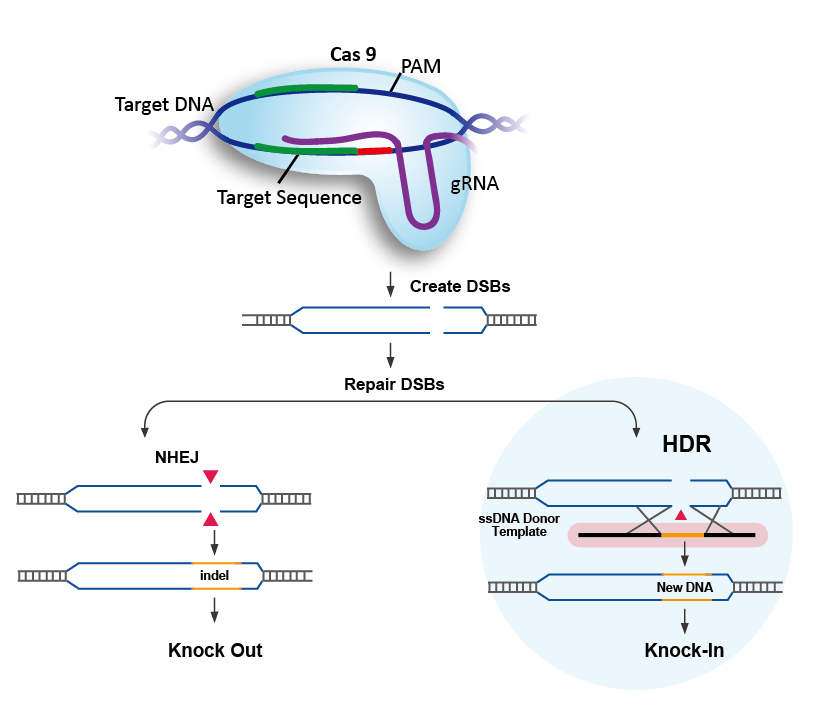Efficient Whole-Gene Insertion In Human DNA Using CRISPR

Table of Contents
Challenges in Whole-Gene Insertion using CRISPR
Successfully inserting entire genes into the human genome using CRISPR presents several significant challenges. Overcoming these obstacles is crucial for realizing the full potential of this technology in gene therapy and other applications.
Large Cargo Delivery Limitations
One major hurdle is the size restriction of current CRISPR systems and the difficulties in delivering large gene sequences. Viral vectors, commonly used for gene delivery, often have limited cargo capacity. Non-viral methods, while offering some advantages, also face challenges in efficiently delivering large DNA molecules.
- Viral vectors: Adeno-associated viruses (AAVs) are widely used but have a limited packaging capacity of approximately 4.7 kb. Lentiviruses can carry larger payloads but have their own limitations regarding immunogenicity and insertional mutagenesis.
- Non-viral methods: Methods like lipid nanoparticles and electroporation can deliver larger DNA molecules but often have lower efficiency and higher toxicity compared to viral vectors.
- Significant research is underway to develop larger-capacity viral vectors and improve the efficiency of non-viral delivery methods for whole-gene insertion.
Precise Targeting and Minimizing Off-Target Effects
Accurate gene insertion is paramount. Unintended genomic modifications (off-target effects) can lead to harmful consequences. Achieving precise targeting requires careful consideration of several factors.
- Optimized guide RNA design: The guide RNA (gRNA) directs the Cas enzyme to the target DNA sequence. Careful design of the gRNA is crucial to minimize off-target binding. Algorithms and computational tools are continuously being improved to optimize gRNA design.
- Improved Cas enzyme variants: Researchers are engineering improved Cas enzyme variants with higher specificity and reduced off-target activity. Examples include high-fidelity Cas9 variants and alternative Cas enzymes like Cas12a.
- Multiplexed guide RNAs: Using multiple gRNAs targeting different sites within the gene can enhance the precision of insertion and reduce off-target effects.
- Improved delivery methods: Efficient and targeted delivery methods can reduce off-target effects by concentrating the CRISPR components at the desired location in the genome.
Efficient Homologous Recombination
Successful whole-gene insertion relies heavily on homologous recombination (HR), a cellular process that uses a donor DNA template to repair a double-stranded DNA break. However, HR efficiency in human cells is often low.
- Donor DNA templates: The design and delivery of the donor DNA template containing the gene to be inserted are crucial for HR efficiency. Optimized donor templates with homology arms flanking the gene improve the chances of successful integration.
- Homologous recombination stimulating factors: Researchers are exploring ways to enhance HR efficiency by using factors that stimulate the HR pathway.
- Achieving high homologous recombination rates remains a major challenge, and further research is needed to optimize this critical step in whole-gene insertion.
Advancements in CRISPR-mediated Whole-Gene Insertion
Despite the challenges, significant advancements are being made to improve the efficiency and precision of CRISPR-mediated whole-gene insertion.
Improved CRISPR-Cas Systems
The development of new Cas enzymes with enhanced properties is driving progress in whole-gene insertion.
- Cas9 variants: High-fidelity Cas9 variants, such as SpCas9-HF1, have been engineered to reduce off-target effects.
- Cas12a (Cpf1): Cas12a offers advantages in terms of its smaller size and different recognition sequence, allowing for targeted editing in different genomic locations.
- Ongoing research focuses on further improving the efficiency, specificity, and versatility of CRISPR-Cas systems for whole-gene insertion.
Innovative Delivery Methods
New strategies for delivering large gene sequences are essential for achieving efficient whole-gene insertion.
- Advanced viral vectors: Improvements in AAV and lentiviral vectors are increasing their cargo capacity and reducing their immunogenicity. Packaging strategies that split the gene into smaller parts and reassemble it in vivo are also being explored.
- Non-viral delivery: Lipid nanoparticles and electroporation are being refined for more efficient and less toxic delivery of larger DNA molecules. The development of novel non-viral carriers with improved targeting and efficacy is a critical area of ongoing research.
CRISPR-based Strategies for Precise Integration
Various CRISPR-based approaches are being developed to enhance the precision of whole-gene insertion.
- Homology-directed repair (HDR): Optimizing HDR pathways is a key focus, employing strategies like the use of donor DNA templates with homology arms, and HDR-stimulating factors.
- Prime editing: This innovative technology allows for precise gene editing without creating double-stranded DNA breaks, reducing the risk of off-target effects.
- Base editing: Base editing enables targeted single-base modifications without causing double-stranded DNA breaks, improving the precision of gene insertion.
Applications of Efficient Whole-Gene Insertion
Efficient whole-gene insertion using CRISPR holds immense potential across various fields.
Gene Therapy for Genetic Disorders
Whole-gene insertion offers a promising approach to treating genetic disorders caused by gene deletions or mutations.
- Examples: Cystic fibrosis, hemophilia, and Duchenne muscular dystrophy are examples of genetic disorders where whole-gene insertion could offer curative therapies.
- Whole-gene insertion could correct disease-causing mutations or introduce functional copies of missing genes.
Engineered Cell Lines for Research
Creating genetically modified cell lines with precisely inserted genes is crucial for various research applications.
- Advantages: Precisely engineered cell lines provide accurate models for studying disease mechanisms and drug responses.
- Applications: Whole-gene insertion enables the creation of robust cell models for drug discovery, development, and testing.
Synthetic Biology and Gene Circuits
Whole-gene insertion is instrumental in constructing complex gene circuits for diverse applications.
- Metabolic pathways: Inserting entire metabolic pathways can be used to engineer microorganisms for biofuel production or the synthesis of valuable compounds.
- Gene regulatory networks: Precisely engineered gene regulatory networks can control gene expression, enabling the development of sophisticated biological systems with tailored functionalities.
The Future of Efficient Whole-Gene Insertion with CRISPR
The development of efficient whole-gene insertion using CRISPR technology faces significant challenges, but ongoing research is rapidly advancing the field. Improved CRISPR-Cas systems, innovative delivery methods, and refined strategies for precise integration are paving the way for more efficient and accurate gene insertion. This technology has the potential to revolutionize gene therapy, enabling the treatment of a wide range of genetic disorders. Furthermore, its applications extend to various other areas of biotechnology, including drug discovery and synthetic biology. The future holds exciting possibilities for the further refinement of CRISPR-mediated whole-gene insertion, leading to groundbreaking advancements in healthcare and beyond.
Stay updated on the breakthroughs in efficient whole-gene insertion using CRISPR by following [link to relevant resources/research].

Featured Posts
-
 Djokovics Union Files Lawsuit Against Tennis Authorities
May 30, 2025
Djokovics Union Files Lawsuit Against Tennis Authorities
May 30, 2025 -
 Valley High School Welcomes New Principal West Des Moines School Board Announcement
May 30, 2025
Valley High School Welcomes New Principal West Des Moines School Board Announcement
May 30, 2025 -
 Eala Stuns Keys In Miami Reaching Quarterfinal Stage
May 30, 2025
Eala Stuns Keys In Miami Reaching Quarterfinal Stage
May 30, 2025 -
 Wybory Prezydenckie 2025 Analiza Kampanii Slawomira Mentzena
May 30, 2025
Wybory Prezydenckie 2025 Analiza Kampanii Slawomira Mentzena
May 30, 2025 -
 Confesion Impactante Tenista Argentino Revela La Grandeza De Marcelo Rios
May 30, 2025
Confesion Impactante Tenista Argentino Revela La Grandeza De Marcelo Rios
May 30, 2025
